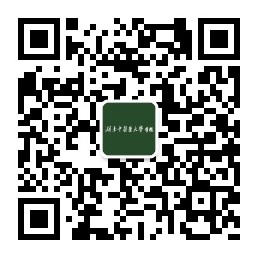| 引用本文: |
赖碧玉, 李波, 王凌雁, 曾怡慧, 郑若虚, 贾海鹏, 陈瑶, 王双双, 蒋秀英, 刘丹, 刘迈兰, 佘畅.基于“脑肠同调”理论探讨针灸治疗腹泻型肠易激综合征的临床观察[J].湖南中医药大学学报,2025,45(7):1290-1296[点击复制] |
|
| |
|
|
| 本文已被:浏览 501次 下载 308次 |
| 基于“脑肠同调”理论探讨针灸治疗腹泻型肠易激综合征的临床观察 |
| 赖碧玉,李波,王凌雁,曾怡慧,郑若虚,贾海鹏,陈瑶,王双双,蒋秀英,刘丹,刘迈兰,佘畅 |
| (长沙市中医医院(长沙市第八医院), 湖南 长沙 410000;湖南湘雅博爱康复医院有限公司 湖南 长沙 410000;湖南中医药大学, 湖南 长沙 410100;湖南大众传媒职业技术学院, 湖南 长沙 410100) |
| 摘要: |
| 目的 基于“脑肠同调”理论观察不同针灸方法治疗腹泻型肠易激综合征(IBS-D)的临床疗效。方法 将140例患者随机分为4组,最终纳入有效病例128例,分为西药组(n=33)、针刺组(n=31)、艾灸组(n=32)、温针灸组(n=32)。西药组予单纯西药治疗(马来酸曲布美汀片,口服,0.1 g/次,每天3次),针刺组予单独针刺,艾灸组予悬灸,温针灸组予温针灸。以上各组每周连续治疗5 d,休息2 d,连续治疗2周。比较4组治疗前后中医证候积分、IBS病情严重程度调查表(IBS-SSS)、IBS生活质量评分(IBS-QQL)、汉密尔顿抑郁量表(HAMD)、汉密尔顿焦虑量表(HAMA)及远期疗效评价。结果 与治疗前比较,治疗后4组中医证候总积分及各项积分、IBS-SSS评分、HAMA评分、HAMD评分均降低(P<0.05),IBS-QQL评分升高(P<0.05)。与西药组比较,艾灸组、温针灸组中医证候总积分及各项积分、IBS-SSS评分、HAMA评分、HAMD评分均降低(P<0.05),IBS-QQL评分升高(P<0.05)。与针刺组比较,艾灸组、温针灸组中医证候总积分、大便性状及次数、劳累后发作或加重、受凉后发作或加重、神疲倦怠、纳呆均降低(P<0.05),IBS-SSS评分降低(P<0.05),IBS-QQL评分升高(P<0.05)。与针刺组、艾灸组比较,温针灸组HAMA评分降低(P<0.05)。艾灸组、温针灸组临床总有效率高于西药组(P<0.05),温针灸组临床总有效率高于针刺组(P<0.05)。针刺组、艾灸组、温针灸组治疗后的复发率低于西药组(P<0.05)。结论 基于“脑肠同调”的选穴方案,针刺、艾灸、温针灸3种方法均能改善IBS-D患者的胃肠道不适及焦虑抑郁状态,3种治疗效果均优于单纯西药治疗,均未见明显不良反应,且温针灸在改善焦虑情况上治疗效果最佳,这可能与温针灸结合针刺疏经调神、艾灸温脾安神的优势有关。 |
| 关键词: 腹泻型肠易激综合征 脑肠同调 温针灸 针刺 艾灸 焦虑抑郁状态 |
| DOI:10.3969/j.issn.1674-070X.2025.07.013 |
| 投稿时间:2025-02-06 |
| 基金项目:湖南省自然科学基金项目(2021JJ70066);湖南省卫生健康高层次人才重大科研专项(R2023177);湖南中医药大学校级科研项目(2022XYLH088);湖南省中医药科研计划项目(B2023108);湖南省十四五中医药骨干人才项目(2024-4);湖南省中医药科研计划项目(C2024034);湖南中医药大学研究生创新课题(2024CX216)。 |
|
| Clinical observation on acupuncture treatment of diarrhea-predominant irritable bowel syndrome based on the theory of "brain-intestine homology regulation" |
| LAI Biyu, LI Bo, WANG Lingyan, ZENG Yihui, ZHENG Ruoxu, JIA Haipeng, CHEN Yao, WANG Shuangshuang, JIANG Xiuying, LIU Dan, LIU Mailan, SHE Chang |
| (Changsha Hospital of Traditional Chinese Medicine (Changsha Eighth Hospital), Changsha, Hunan 410000, China;Hunan Xiangya Bo'ai Rehabilitation Hospital Co. LTD, Changsha, Hunan 410000, China;Hunan University of Chinese Medicine, Changsha, Hunan 410100, China;Hunan Mass Media Vocational and Technical College, Changsha, Hunan 410100, China) |
| Abstract: |
| Objective To observe the clinical efficacy of different acupuncture methods based on the "brain-intestine homology regulation" theory in treating diarrhea-predominant irritable bowel syndrome (IBS-D). Methods A total of 140 patients were randomly divided into four groups, with 128 valid cases eventually included:western medicine group (n=33), acupuncture group (n=31), moxibustion group (n=32), and warm needle moxibustion group (n=32). The western medicine group received pure western medicine treatment (Trimebutine Maleate Tablets, oral administration, 0.1 g/time, three times daily). The acupuncture group received acupuncture alone, the moxibustion group received suspended moxibustion, and the warm needle moxibustion group received warming needle moxibustion. All groups received continuous treatment for 5 days per week, with a 2-day break, lasting for 2 weeks. The TCM clinical patten scores, IBS Severity Scoring System (IBS-SSS), IBS Quality of Life Score (IBS-QOL), Hamilton Depression Scale (HAMD), and Hamilton Anxiety Scale (HAMA) were compared before and after treatment among the four groups. Results Compared with those before treatment, the total scores and individual item scores of TCM patterns, IBS-SSS scores, HAMA scores, and HAMD scores decreased (P<0.05), while the IBS-QOL scores increased (P<0.05) in all four groups after treatment. Compared with the western medicine group, the total scores and individual item scores, IBS-SSS scores, HAMA scores, and HAMD scores were lower (P<0.05), and the IBS-QOL scores were higher (P<0.05) in the moxibustion and warm needle moxibustion groups. Compared with the acupuncture group, the total scores, stool properties and frequency, occurrence or aggravation after fatigue or cold, mental fatigue, and loss of appetite decreased (P<0.05), the IBS-SSS scores were lower (P<0.05), while the IBS-QOL scores were higher (P<0.05) in the moxibustion and warm needle moxibustion groups. Compared with both the acupuncture and moxibustion groups, the HAMA score was lower (P<0.05) in the warm needle moxibustion group. The total clinical effective rates were higher in the moxibustion and warm needle moxibustion groups compared with the western medicine group (P<0.05), and the warm needle moxibustion group (93.75%) had a higher clinical total effective rate compared with the acupuncture group (P<0.05). The recurrence rates after treatment were lower in the acupuncture, moxibustion, and warm needle moxibustion groups compared with the western medicine group (P<0.05). Conclusion Based on the acupoint selection scheme of "brain-intestine homology regulation", the three methods of acupuncture, moxibustion, and warm needle moxibustion can all improve gastrointestinal discomfort and anxiety-depression states in IBS-D patients. The therapeutic effects of all three methods are superior to pure western medicine treatment, and no obvious adverse reactions are observed. Warm needle moxibustion demonstrates the best therapeutic effects in improving anxiety, which may be related to its combined advantages of acupuncture in regulating meridians and calming the mind, and moxibustion in warming the spleen and calming the spirit. |
| Key words: diarrhea-predominant irritable bowel syndrome brain-intestine homology regulation warm needle moxibustion acupuncture moxibustion anxiety-depression state |
|

二维码(扫一下试试看!) |
|
|
|
|




